In the world of contemporary art, few artists manage to provoke thought and challenge perceptions quite like Banksy. At first glance, the ‘Napalm’ print presents a scene filled with happiness; Ronald McDonald and Mickey Mouse symbolise the carefree childhood that many associate with American culture. These figures embody the quintessential American Dream – a promise of prosperity and a world where children can play and thrive. Advertisements regularly feature children laughing in the sun, enjoying Happy Meals, and exploring the wonders of Disneyland, reflecting ideals of innocence that America holds dear.
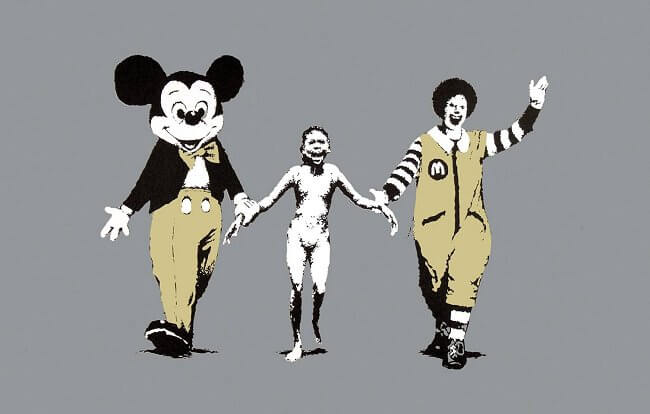
Banksy – Napalm Print
However, Banksy masterfully disrupts this idyllic tableau by incorporating the iconic image of Associated Press photographer Nick Ut outside the village of Trang Bang on 8 June, 1972. This powerful photograph captures Kim Phúc, a nine-year-old girl, fleeing a napalm attack during the Vietnam War. In her moment of anguish, Kim cries out, “too hot, too hot,” as her back and arms bear the horrific burns inflicted by the napalm bomb. This haunting image earned Kim tragic recognition as ‘The Napalm Girl’ worldwide.
This poignant inclusion starkly contrasts the carefree innocence represented by Ronald McDonald and Mickey Mouse with the devastating realities faced by victims of war. Through this juxtaposition, Banksy compels viewers to confront uncomfortable truths about the American Dream and the impact of conflict on innocent lives. It’s not merely for shock value; it serves as a visceral reminder that not all children enjoy the carefree existence symbolised by these corporate mascots.
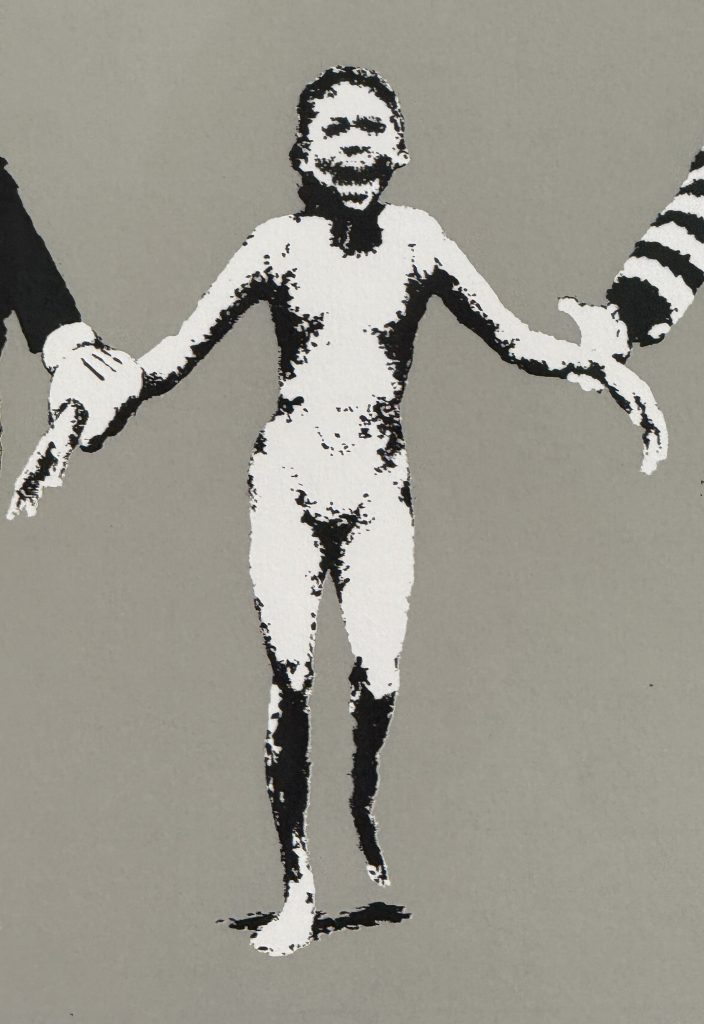
Banksy – Napalm Print © GraffitiStreet
The use of napalm, a flammable gel weapon developed in part by researchers at Harvard University, became a grim hallmark of the Vietnam War, symbolising American military tactics that inflicted immense suffering. Its development came during World War II, but this incendiary weapon gained notoriety for its deployment in Vietnam, where it was used to clear vegetation, destroy enemy positions and install fear in the local population. Napalm caused severe burns and widespread destruction, and its use was highly controversial due to the devastating effects it had on both combatants and civilians.
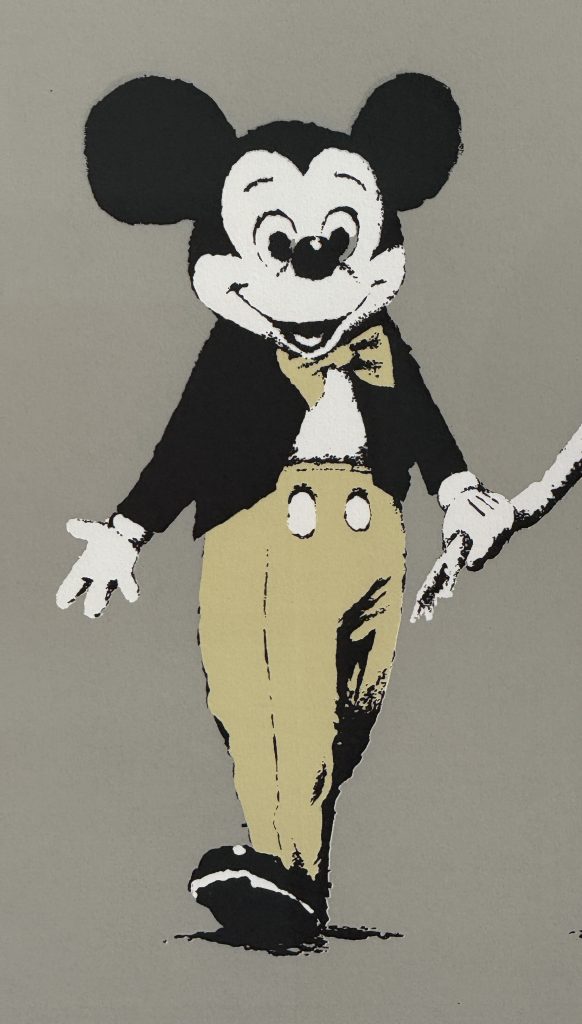
Banksy – Napalm Print © GraffitiStreet
The infamous image of ‘The Napalm Girl’ highlighted the tragic consequences of this weapon and became a powerful symbol of the war’s brutality. The conflict resulted in significant casualties and sparked widespread protests in the U.S., as opposition to the war grew. Guerrilla warfare tactics used by the Viet Cong posed challenges for American forces, ultimately leading to the withdrawal of troops in 1973 and the fall of Saigon in 1975. The repercussions of this involvement continue to shape U.S. foreign policy and military strategies today.
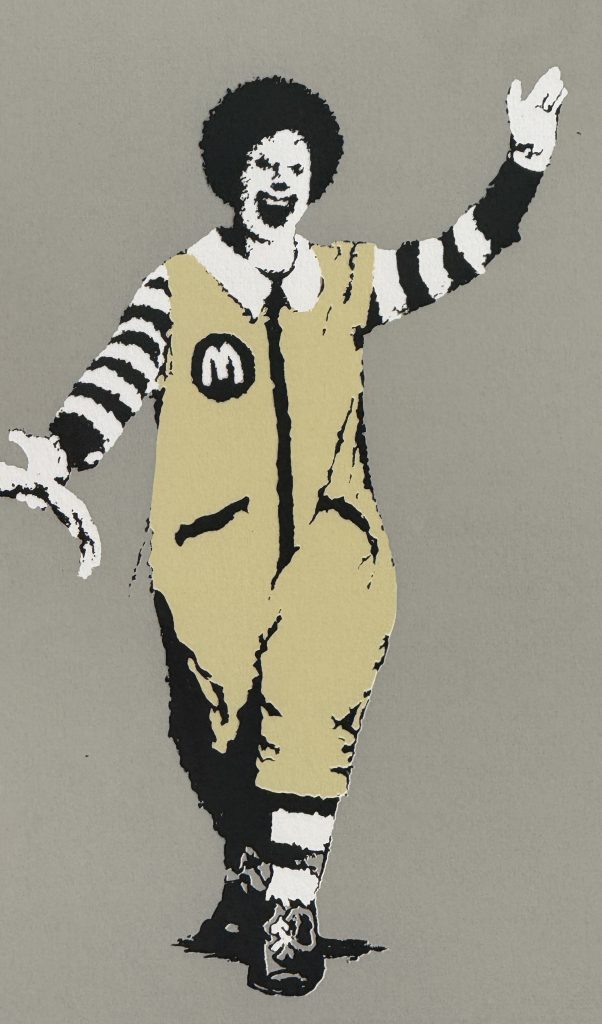
Banksy – Napalm Print © GraffitiStreet
By linking the cheerful images of Ronald McDonald and Mickey Mouse to Kim Phúc’s suffering, Banksy underscores a dark irony. While many children dream of America’s joyful experiences, Kim embodies the human cost of its military strategies. This contrast highlights the dissonance between the innocent smiles associated with American culture and the inhumane realities of its actions in conflict.
“We are challenged to look beyond the surface – beyond the smiles of Ronald McDonald and Mickey Mouse – and confront the uncomfortable truths that underpin one of Banksy’s most provocative artworks – Napalm”
Donna Haden co-Founder GraffitiStreet
Banksy ‘Napalm’ humanises the experiences of war, particularly for children caught in the crossfire of larger socio-political agendas. By juxtaposing Kim Phúc’s trauma with cheerful childhood imagery, Banksy evokes empathy and urges reflection on societal values, raising essential questions about how we allow commercial imagery to distract us from the real-world consequences of violence and exploitation.
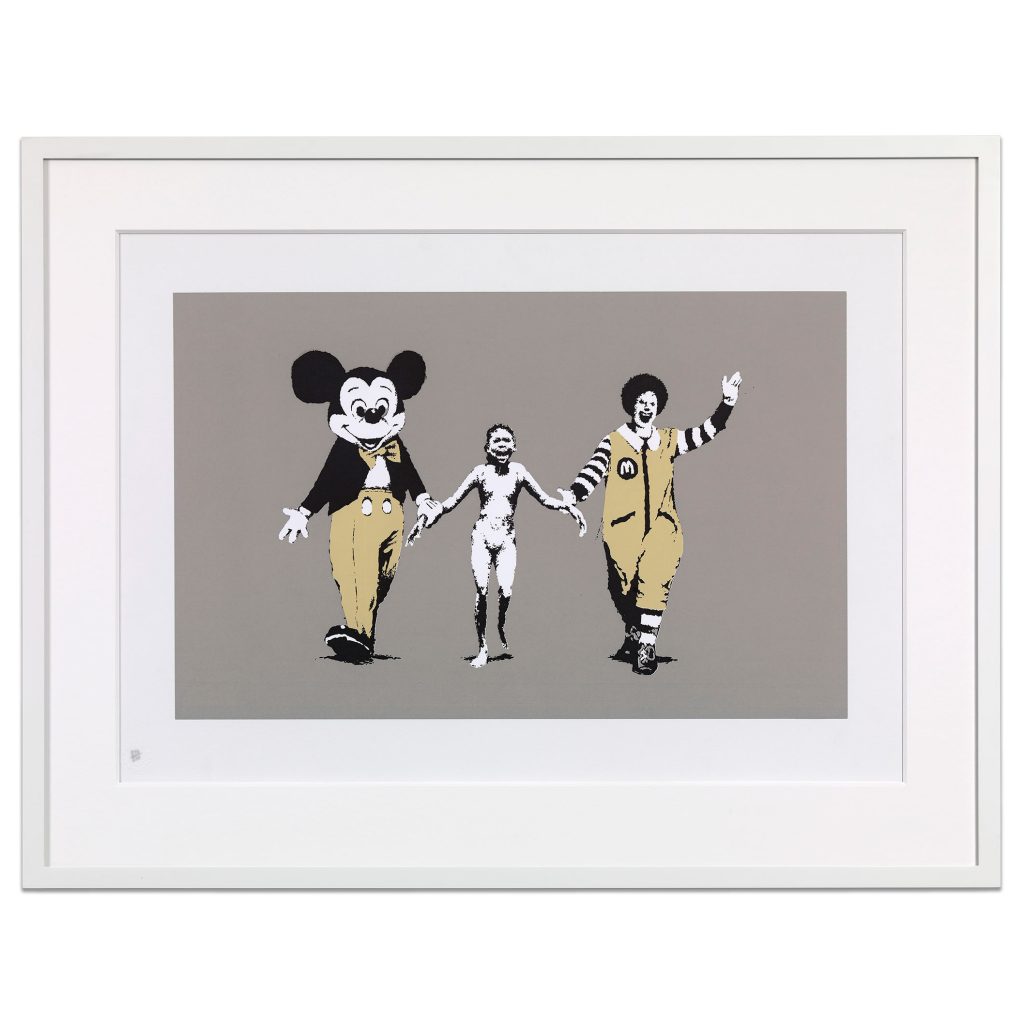
Banksy – Napalm (Unsigned) Framed at GraffitiStreet gallery
Today, Kim Phúc is not only an esteemed international peace activist but also a poignant reminder of the innocence lost to war. Now based in Canada, she travels the world, sharing her powerful story and advocating for peace. Her journey from a war victim to a radiant symbol of hope highlights the stark contrasts between childhood innocence and the brutal realities of conflict.
As we reflect on Banksy’s artwork, we are reminded of the urgent need to confront these uncomfortable truths and to foster greater compassion, understanding, and activism to support those affected by war and promote peace. Only through such awareness can we hope to reshape our collective narrative and honor the resilience of those like Kim who endure the scars of war.